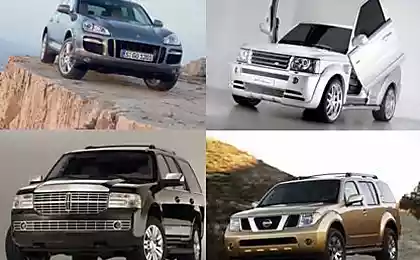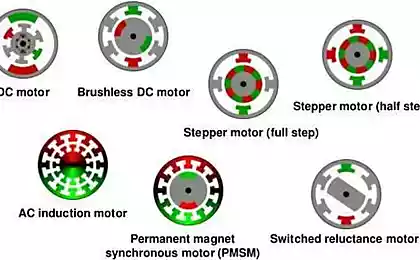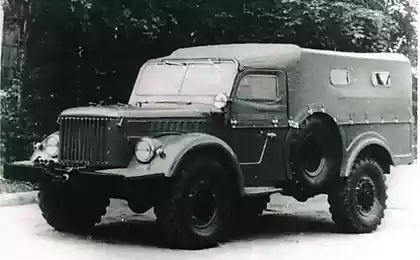208
Front, rear or all-wheel drive is better for our roads
Motorists have long argued about which drive is better: front, rear or full? To understand the arguments of the parties and understand what the mysterious symbols AWD, FWD, RWD and 4WD mean, our article will help.

Which is the best way to start with a definition? Drive is the layout of the system that transfers power from the engine to the wheels of the machine. On which pair of wheels (front or rear) the energy of rotation is given, and the type of drive of the car depends.

FWD (front-wheel drive), or front-wheel drive, is a design in which the front wheels pull the car and the rear wheels are driven. In the case of RWD (rear-wheel drive), the car, on the contrary, is pushed by the rear wheels, and the front wheels do not receive power and can freely maneuver.
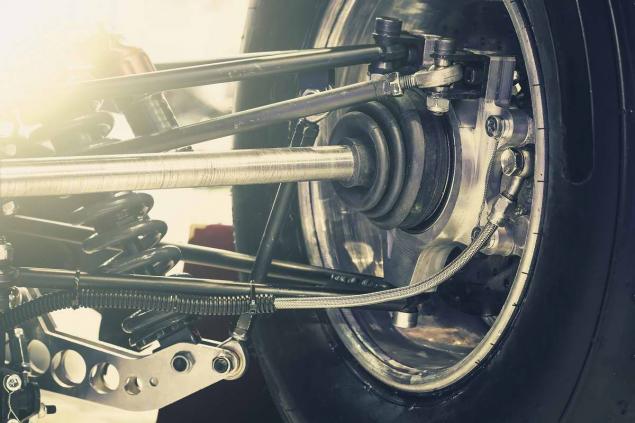
The names AWD (all-wheel drive) and 4WD (four-wheel drive) for four-wheeled cars mean roughly the same thing - drive on all four wheels. But there are nuances. The difference is that in AWD, a special mechanism constantly distributes power between the axles. And in 4WD, you can manually turn on 4H (like AWD) or 4L mode, in which all four wheels rotate the same way and receive equal power all the time. This mode is not suitable for driving around the city, but allows you to easily get out of deep snow or mud.
At the dawn of the automotive industry, all cars had a rear-axle drive. Therefore, it is often called classic.
Pluses
Cons
Front-wheel drive Pluses
Cons

To date, front-wheel drive models have almost completely captured the automotive market. At least in the budget part. But to give an unambiguous answer which drive is better is still not easy. Front-wheel drive is safer and more convenient for beginners. Such a car is easier to drive in winter and will satisfy 99% of drivers who spend all their time in the city, or only occasionally go on a dirt road.
Rear-wheel drive is more suitable for fans of drifting, sports riding and automotive classics. But in winter, in the hands of a beginner, a rear-wheel drive car can become a source of trouble. On bad roads, 4x4 is more efficient than others, but fuel consumption and maintenance costs... In short, the golden middle majority of drivers are likely to call front-wheel drive. It is more economical than the full, and it is safer than the back.

Which is the best way to start with a definition? Drive is the layout of the system that transfers power from the engine to the wheels of the machine. On which pair of wheels (front or rear) the energy of rotation is given, and the type of drive of the car depends.

FWD (front-wheel drive), or front-wheel drive, is a design in which the front wheels pull the car and the rear wheels are driven. In the case of RWD (rear-wheel drive), the car, on the contrary, is pushed by the rear wheels, and the front wheels do not receive power and can freely maneuver.

The names AWD (all-wheel drive) and 4WD (four-wheel drive) for four-wheeled cars mean roughly the same thing - drive on all four wheels. But there are nuances. The difference is that in AWD, a special mechanism constantly distributes power between the axles. And in 4WD, you can manually turn on 4H (like AWD) or 4L mode, in which all four wheels rotate the same way and receive equal power all the time. This mode is not suitable for driving around the city, but allows you to easily get out of deep snow or mud.
At the dawn of the automotive industry, all cars had a rear-axle drive. Therefore, it is often called classic.
Pluses
- In machines with a classical layout, the load on the front and rear axles is distributed evenly. This improves maneuverability and makes it easier for manufacturers to adjust taxiing. No wonder most sports cars are still produced with rear-wheel drive.
- Rear-wheel drive cars better overcome steep slopes. When climbing uphill, the rear leading axis is pressed more strongly against the road and the likelihood of slipping decreases.

- Due to the fact that power is not supplied to the front wheels, they can turn with a large angle. At the same time, fewer steering turns are spent on a steep turn.
- In winter, rear-wheel drive cars often enter the skid. But they come out of it easily. After all, to get out of the skid on the front wheel drive, you need to increase the speed, and on the rear - release the gas pedal, which is most likely to be automatically done by an inexperienced driver.

- Tires on rear-wheel drive cars wear out evenly.
Cons
- The ease of entry of rear-wheel drive cars into the skid is the main drawback for driving in the city.
- The driveshaft passing under the cabin floor reduces the useful volume of rear-wheel drive cars.
- Additional design elements (drivershaft, rear axle gearbox, differential) make cars with RWD more expensive, complicate repair and maintenance.
Front-wheel drive Pluses
- Front-wheel drive cars are cheaper to manufacture and repair.
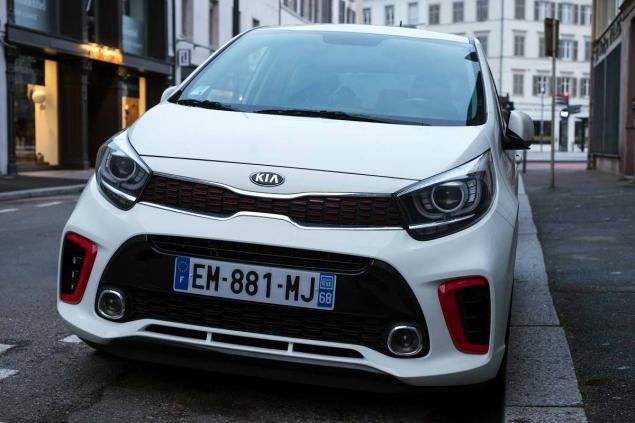
- Simple design contributes to fewer breakdowns.
- Front-wheel drive cars are usually lighter. Hence, better acceleration dynamics and less fuel consumption.
- Complements the picture more spacious due to the lack of a driveshaft salon.
Cons
- Uneven distribution of weight. Hence the poor grip of the rear wheels with the road.
- Due to the concentration of all important structural elements in the front of the car, repair is complicated, since many parts must be dismantled beforehand.

- The steering wheel receives much more vibrations from the roughness of the road.

To date, front-wheel drive models have almost completely captured the automotive market. At least in the budget part. But to give an unambiguous answer which drive is better is still not easy. Front-wheel drive is safer and more convenient for beginners. Such a car is easier to drive in winter and will satisfy 99% of drivers who spend all their time in the city, or only occasionally go on a dirt road.
Rear-wheel drive is more suitable for fans of drifting, sports riding and automotive classics. But in winter, in the hands of a beginner, a rear-wheel drive car can become a source of trouble. On bad roads, 4x4 is more efficient than others, but fuel consumption and maintenance costs... In short, the golden middle majority of drivers are likely to call front-wheel drive. It is more economical than the full, and it is safer than the back.
Should you write to your ex’s wife to open her eyes to your spouse’s infidelity?
I was the mother of twins, until they brought me another child in the hospital.




